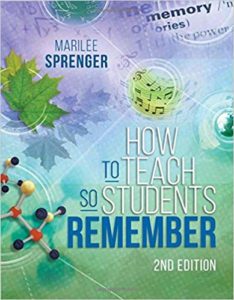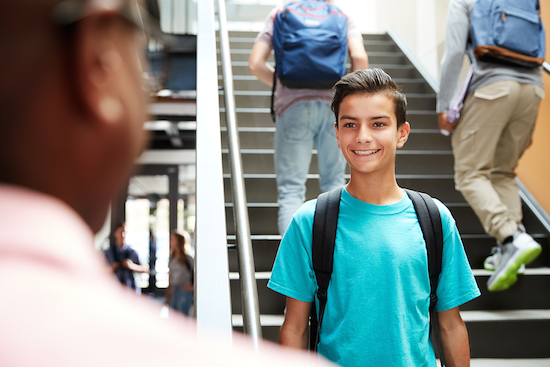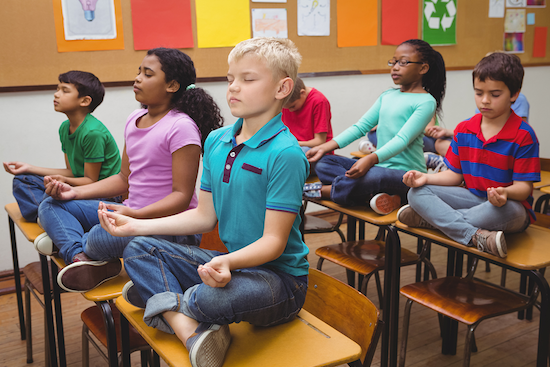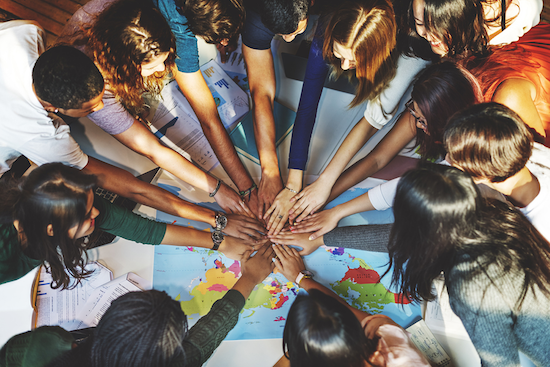Boost SEL’s Impact with 10 Brain-Wise Strategies
Author and veteran educator Marilee Sprenger is a member of the American Academy of Neurology and keeps informed about the latest brain research on learning. Her teaching background helps her translate this knowledge into practical classroom strategies.
By Marilee Sprenger

Research on the brain and learning is revealing how we can help students trigger their Social Emotional Learning competencies: self-awareness, self-regulation, social awareness, relationship skills, and responsible decision-making.
And yet. Many times during my work in schools I’ll ask teachers if they teach SEL. I often get one of two answers: (1) “I don’t have time and my students are too old for that stuff.” or (2) “Oh, yes, a person comes in once a week for 30 minutes and teaches them about SEL.”
Both answers concern me. Students are never too old for this stuff. And SEL can be part of your everyday activities. You don’t have to take “special time” for it – you can easily incorporate it into your daily plan.
And you don’t need a canned program. In fact, you are probably teaching some SEL through the good practices you already incorporate in your classroom.
Here are 10 integration strategies with descriptions: why they are useful, how to implement them, some of their brain connections, and the SEL competencies each one addresses.
Strategy One: Greeting students at the door
Why: Gives students a sense of belonging: builds relationships. Students feel recognized and listened to.
How: A full school greeting is very effective on the first day of school and then intermittently thereafter. This is when all adults in the building greet the students as they enter the building. This includes everyone from the custodians to the principal and everyone in-between. Let students know that you are all in this together, and everyone is approachable and cares about them and their learning.
A personal greeting at the door of your classroom has shown to be very effective for making connections with students, increasing engagement and reducing unwanted behaviors. Simply stand by your door and greet (welcome) your students to your class. Say something positive which can range from a compliment to a concern. (“I’m so happy you are here today; I hope you are feeling better!” “I enjoyed reading your essay!”)
Brain Effects: Releases serotonin; soothes the amygdala.
SEL Competency: Relationship skills.
Strategy Two: Checking in
Why: Helps students check their feelings; helps you know what state the class is in and what you should do next. A formative assessment of emotions.
How: Color code emotions and have students choose a color strip to represent how they are feeling, putting it on their desk. Or use Emojis. Have students choose an emoji indicating how they are feeling and put it on their desk.
Students write on small cards explaining how they are feeling. Or have an erasable chart upon which they can mark how they feel. This chart can have columns that you choose, such as angry, sad, happy, excited, curious, etc. Students can change their markings throughout the day.
Brain Effects: Releases serotonin, lowers stress and cortisol.
SEL Competency: Self-awareness.
Three: Journaling
Why: Students can express their feelings; writing is therapeutic.
How: Have students write in their journals each day, even for just a few minutes.
Brain Effects: Lowers stress (cortisol production) when writing about stressful situations; releases dopamine to help with focus and makes you feel better; calms the amygdala.
SEL Competency: Self-awareness.
Strategy Four: Mindfulness
Why: Mindfulness has made its mark in SEL. By helping students become aware of the connection between their emotions, thoughts, and bodily sensations, students are better able to regulate their emotions. Once a student knows which technique works, they can apply it in situations where they feel they are losing control.
Mindfulness boosts the attention network in the frontal parietal system in the brain. As students become more aware of their bodies and their feelings through mindfulness; research shows they have more cognitive flexibility.
How: At the middle level with our many time constraints, I find these two methods most used:
- Breathing: teach your students deep breathing techniques; many are available on the Internet.
- Movement: yoga-like activity is used in many schools for the purpose of calming the body and mind. If “yoga” makes some parents uncomfortable, you don’t have to use that label.
Brain Effects: Increases gray matter (more brain cells) in the frontal lobes and the hippocampus (learning and memory), and decreases cells in the amygdala, where we have the fight or flight response, so there is less reactivity. To understand more fully the implications of this, the amygdala has more connections projecting outward toward the prefrontal cortex (where we do higher level thinking, focus, plan, etc.) which can set off alarms. If the amygdala decreases in cells, it also decreases those connections, therefore there should be fewer alarms set off.
SEL Competency: Self-awareness, self-regulation.
Strategy Five: Rituals
Why: Routines are helpful procedures that assist memory; rituals are repeated events that elicit feelings. Rituals provide a feeling of belonging.
How: Set up several procedures that elicit a positive feeling such as:
At the beginning of class: Play the same music • Students meet in small groups to check homework • Journal activities • Movement activities • A clapping ritual to get their attention.
At the end of class: Familiar music being played • Exit cards required • Quick recap of important points • Students repeat aloud what their homework assignment is.
Birthdays: Favorite birthday song (Beatles, traditional, etc) • Sheet of paper is sent around room for positive comments • Treats are provided by teacher • Birthday person has special seat, hat, etc.
Brain Effects: Rituals produce serotonin to calm the brain; they lower cortisol.
SEL Competency: Self-Awareness, social awareness, self-regulation.
Strategy Six: Role playing
Why: Often when put in a position to act out a situation, students learn about their own emotions (how do I feel about this situation?), learn how to control the feelings of the character (how far would this person go? Would he or she be out of control?), and consider the perspective of someone other than themselves.
How: Two students can role play an argument and then switch roles to truly feel the other’s perspective. Role play events in history, events in science (discoveries, competing opinions, a beaker complaining to a burner about the experiment), math computations (the numerator and denominator discussing their roles in a fraction).
Brain Effects: Prefrontal cortex is activated as the student accesses information from long-term and/or working memory; limbic system and emotions are active as the student accesses and expresses feelings about the content; small amounts of cortisol are released as good stress during the performance.
SEL Competency: Self-awareness, social awareness, relationship building, decision-making.
Strategy Seven: Teaming
Why: Teams promote social skills. Getting along with different types of people is essential in this world of team-oriented business. Well-facilitated cooperative learning promotes taking turns as well as taking responsibility.
How: For various units of study, create small groups. Provide the opportunity for some “get to know each other” activities. If the team will be together for any length of time, have each create a name and/or a cheer or slogan for their team. This creates some bonding and some fun. The team will work together cooperatively on some of the content they are learning.
Brain Effects: Releases serotonin for calming; releases dopamine for focus and engagement.
SEL Competency: Social awareness; relationship building.
Strategy Eight: Jobs
Why: Students feel important when they contribute to the class. They feel missed if they are not present to do their job. This builds a sense of responsibility as well as self-management as the student must plan his or her time to get the job done.
How: Make a list of the possible “jobs” in your classroom. If you have short class periods, list weekly jobs. For instance, taking attendance is a daily job, and so is emptying the pencil sharpener or waste basket. If you have a class pet, like my 7th grade gerbil, a student can be in charge of cleaning the cage or feeding. (Sometimes when a student needed a hug, I would have him or her give “Homey” a cuddle.) You can assign a different student each day to take attendance using your seating chart. This takes only a few minutes and can often be completed before class has begun. Other ideas for classroom jobs: planning field trips, creating bulletin boards, setting up lesson plan activities, dreaming up room arrangements.
Brain Effects: Releases serotonin from the feeling of belonging; releases dopamine from focusing on a goal (both feel good).
SEL Competency: Relationship building, decision-making.
Strategy Nine: Choices
Why: This is one of the basic needs often mentioned by the experts. Students need to feel that they have some control in their lives. That also relates to school, which is a large part of what they do each day.
How: You do not lose any control by offering students choices in the types of projects they create, in the types of assessments you give them, or even in the topics you cover. Within limits, students can make these choices effectively.
Brain Effects: The prefrontal cortex, the area of higher level thinking, is activated when choices are offered.
SEL Competency: Decision-making.
Strategy Ten: Brainstorming
Why: This is an excellent way to promote relationship building. Students must learn to listen, take turns speaking, prioritize ideas, and communicate in a respectful way.
How: In small groups or as a class, ask students to brainstorm ideas such as the following:
Planning a school dance or social; ways to show what they know in any content area, i.e., a presentation, infomercial, billboard, etc. as a performance assessment; ways to keep the school grounds tidy, the best way to communicate with parents, etc.; possible answers to specific questions about content.
Brain Effects: This strategy activates the prefrontal cortex, and many chemicals such as dopamine are released.
SEL Competency: Social awareness, relationship building, decision-making.
References
Bergland, C. “The Neuroscience of Making a Decision.” Psychology Today online. May 6, 2015.
CASEL.org. Social Emotional Learning competencies. (2018).
Martinez, L. “SEL is good teaching.” Edutopia.org (May 5, 2016).
Sousa, D. & Pilecki, T. (2018). From STEM to STEAM. Thousand Oaks, CA: Corwin.
Shardlow, G. “Integrating Mindfulness in Your Classroom Curriculum.” Edutopia.org. November 18, 2015.
Sprenger, M. (2007). Becoming a Wiz at Brain-Based Teaching. Thousand Oaks, CA: Corwin.
Terada, Y. “Welcoming students with a smile.” Edutopia.org. September 11, 2018.
________________________________________

Sprenger is the author of twelve books on the brain and learning. Her most recent books are How to Teach So Students Remember, 2nd Edition (ASCD, 2018) and 101 Strategies to Make Academic Vocabulary Stick (ASCD, 2016). She has written numerous articles and contributed chapters to several publications. See her other MiddleWeb articles here, including her Top 10 post “The 10-Minute Vocabulary Lesson.”
You can reach Marilee at (309) 264-5820, her website marileesprenger.com, email brainlady@gmail.com, or on Twitter @MarileeSprenger.






































Great read. I especially like the part about how mindfulness can lead to more flexibility. As I learn more about Executive Functions and bring this development into my practice I have learned about mental flexibility. I’ve also been getting into mindfulness the past year, so I will have to see how to blend the two more.